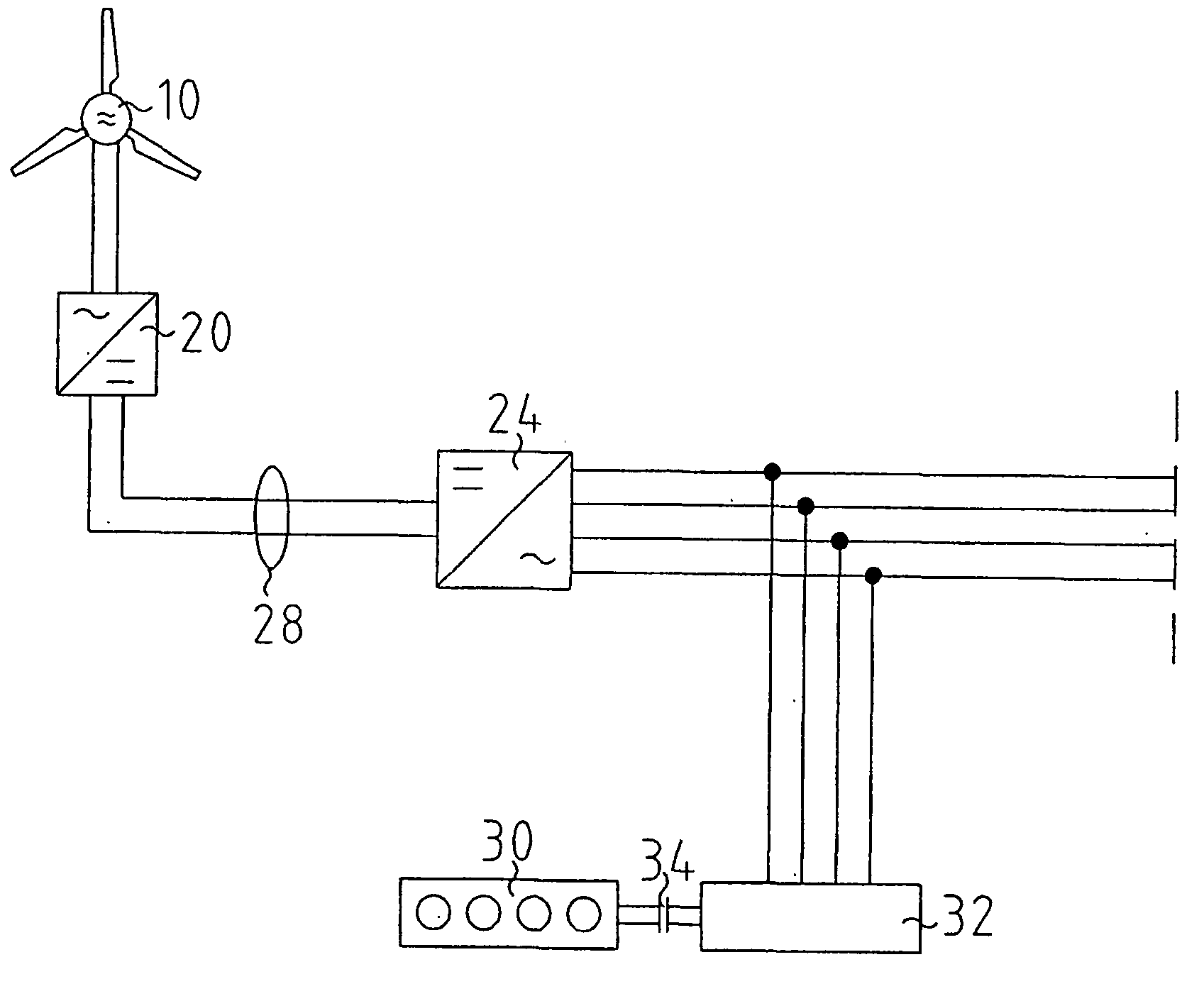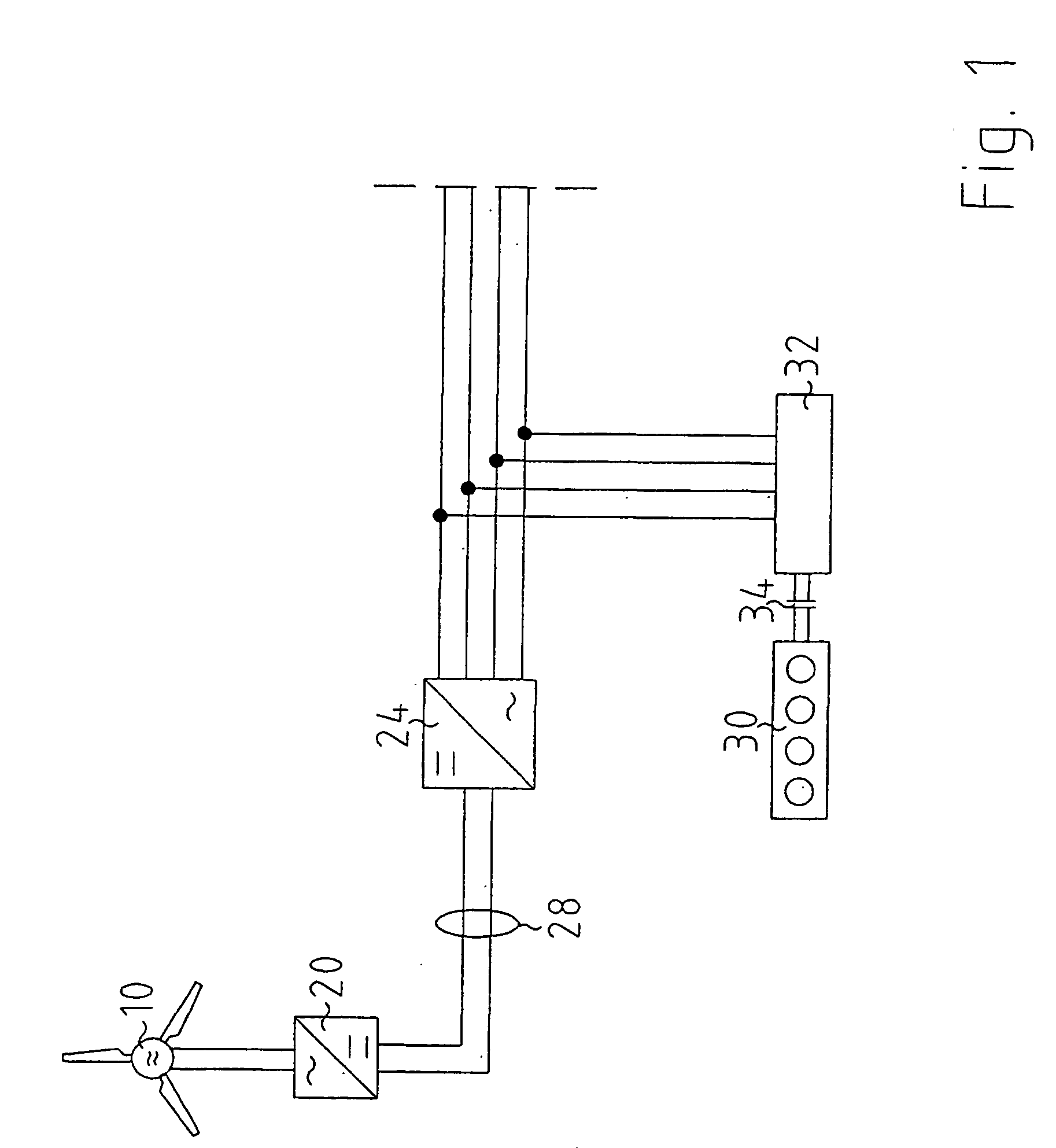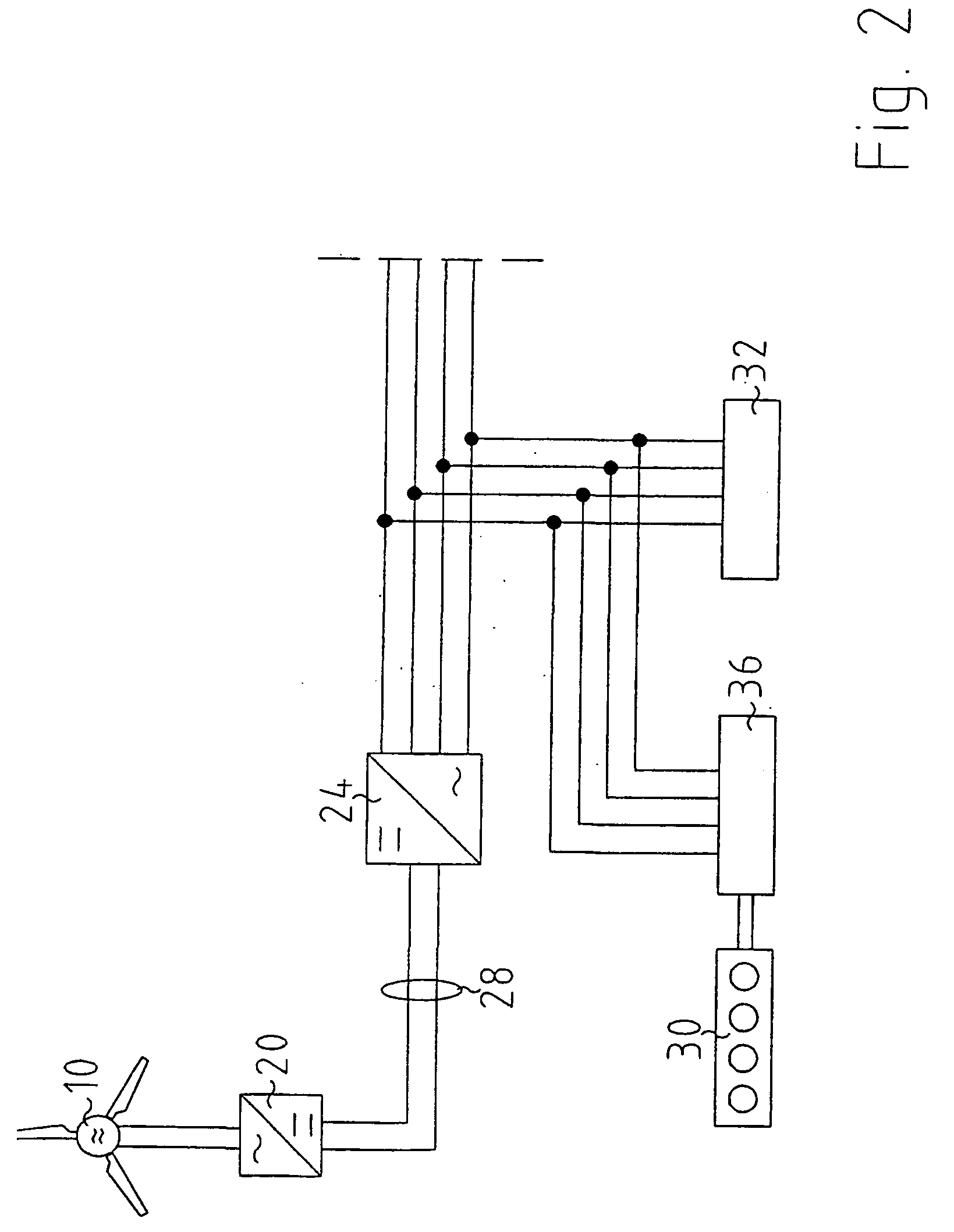Island network and method for operation of an island network
a technology of island network and island network, applied in the field of isolated electrical networks, can solve the problems of high degree of technical effort of self-commutated inverters, correspondingly expensive, and inconsiderable consumption, and achieve the effects of not inconsiderable consumption, mechanical damage in primary energy producers, and low cos
- Summary
- Abstract
- Description
- Claims
- Application Information
AI Technical Summary
Benefits of technology
Problems solved by technology
Method used
Image
Examples
Embodiment Construction
[0023]FIG. 1 shows a wind energy system10 having a first generator therein with a downstream inverter consisting of a rectifier 20, via which the wind energy system is connected to a dc link 28, as well as a dc-ac converter 24 connected to the output of dc link 28.
[0024] A second synchronous generator 32, connected in turn via an electromagnetic clutch 34 to an internal combustion engine 30, is connected in parallel to the output of dc-ac converter 24. The output lines of dc-ac converter 24 and second synchronous generator 32 supply the loads (not shown) with the required energy.
[0025] Wind energy system 10 produces the power for supplying the loads. The energy produced by wind energy system 10 is rectified by rectifier 20 and fed into dc link 28.
[0026] The dc-ac converter 24 produces alternating current from the direct current applied to it and feeds it into the isolated network. Since dc-ac converter 24 is designed as a line-commutated dc-ac converter 24 for reasons of cost, a ...
PUM
 Login to View More
Login to View More Abstract
Description
Claims
Application Information
 Login to View More
Login to View More - R&D
- Intellectual Property
- Life Sciences
- Materials
- Tech Scout
- Unparalleled Data Quality
- Higher Quality Content
- 60% Fewer Hallucinations
Browse by: Latest US Patents, China's latest patents, Technical Efficacy Thesaurus, Application Domain, Technology Topic, Popular Technical Reports.
© 2025 PatSnap. All rights reserved.Legal|Privacy policy|Modern Slavery Act Transparency Statement|Sitemap|About US| Contact US: help@patsnap.com



